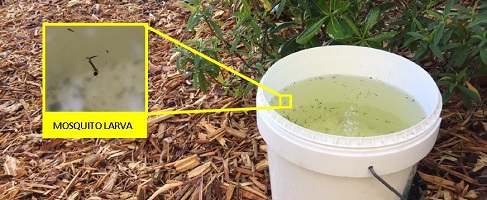Aruba has been experiencing a very active rain season which is appreciated by many but also comes with unavoidable issues for healthcare in Aruba, especially when rainwater becomes stagnant in containers.
Aedes Aegypti, the white-legged mosquito, can spread diseases like Dengue, Zika, or Chikungunya. Rain water or any clean water that becomes stagnant can become a breeding place for these mosquitos. Mosquitos breeding places are a nuisance for the entire neighborhood and increase the chance of these diseases spreading.
Dengue can cause severe symptoms like high fever, headache, and body aches and can even be fatal.
Zika causes fever, rash, headache, joint pain, red eyes, and muscle pain, while Chikungunya causes fever, joint pain, muscle pain, or rash.
The team of the Yellow Fever and Mosquito Control GKMB of the Department of Public Health DVG is going around in neighborhoods every day and visiting each home to create awareness
about the issue and help homeowners identify possible breeding areas for these mosquitos.
This way, each citizen can help themselves and reduce the amount of white-legged mosquitos near their home and in their neighborhood. GKMB is also doing its duties by visiting the areas to clear public areas and dispose of stagnant water that can become breeding areas.
The origin of the mosquito problem is mosquito breeding places. Breeding spots mean more mosquitos and mosquito-related diseases.
The community is responsible for actively help reduce breeding areas by starting at home. Make sure there is no stagnant water in plant pots, flower vases, pet water bowls, old tires, or any open container in and around the house.
The GKMB will only spray in areas with Dengue outbreaks, but this is effective against adult mosquitos and not against the larvas. One can only break the mosquito breeding cycle when it runs out of breeding spots. Involvement if the community is essential to eliminate breeding grounds during the mosquito season.




















